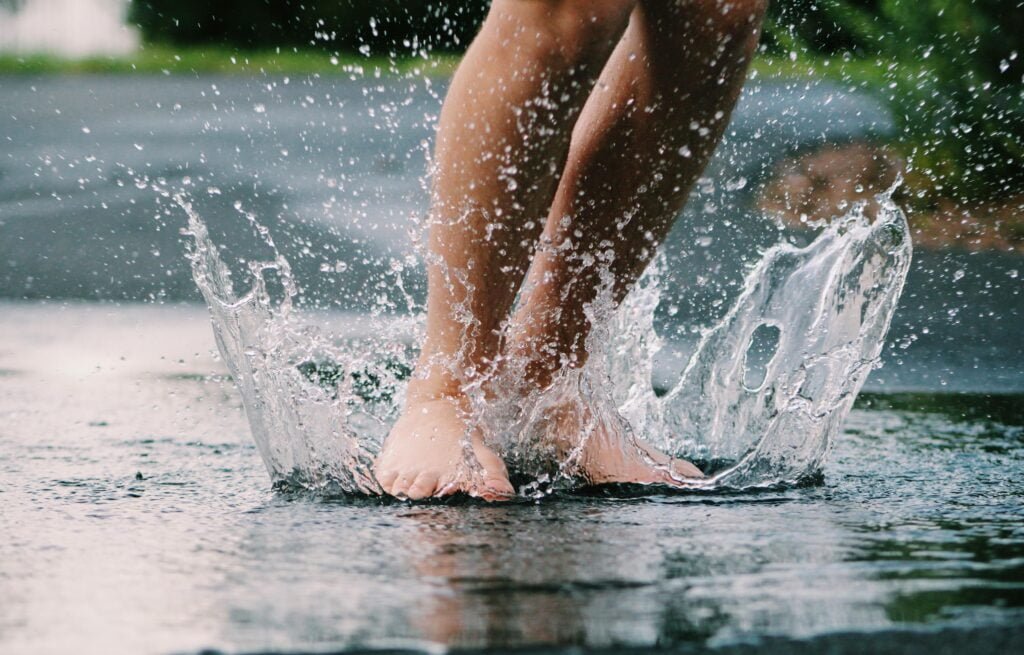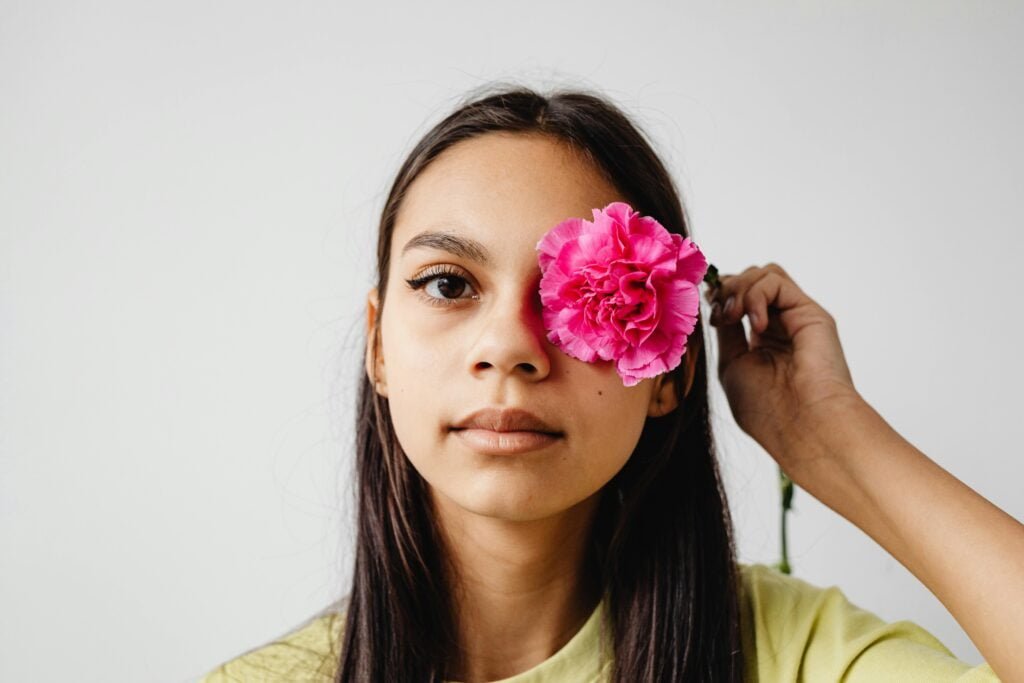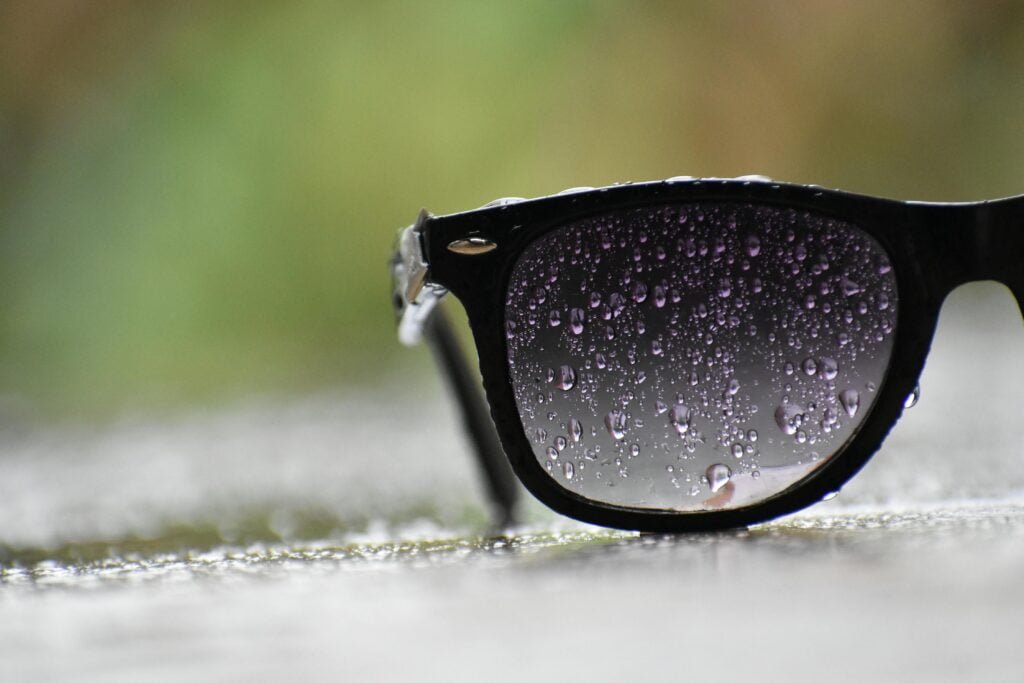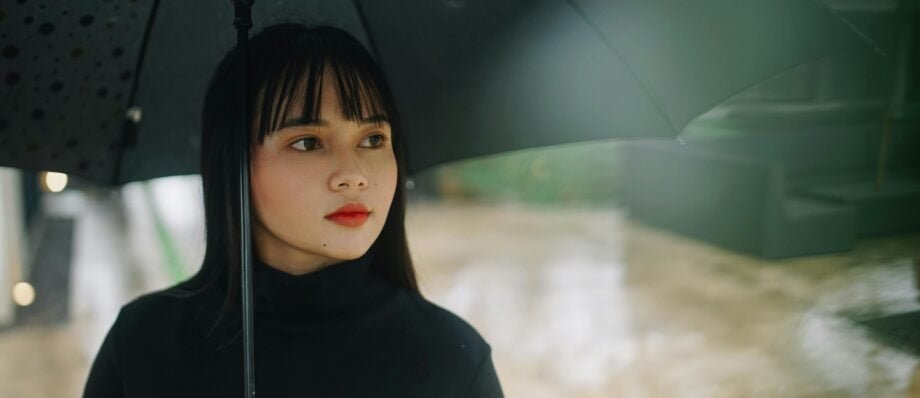Hello, water babies! We know monsoon is an exciting time for rain lovers out there, especially after the scorching summers. It is easy to get lost in the magic of misty weather and rainbows. But, in all your enjoyment, do not skip on your monsoon eye care!
Our eyes need some extra love and care during the rainy seasons. And our monsoon eye care guide will help you do exactly that! Read on to find out all about protecting your eyes and vision during monsoon season.
Table of Contents
- Why Your Eyes Need Special Monsoon Eye Care
- Common Eye Problems and Monsoon Eye Care Solutions
- Monsoon Eye Care Tips: Your Eyes' Best Friends
- When to See a Doctor for Your Monsoon Eye Care
Why Your Eyes Need Special Monsoon Eye Care

Monsoon is a fun season, and it brings much-needed relief from the summer heat. But it also brings unique challenges for your eyes. Rainy conditions can have a negative impact on your eye health. So, it is important to pay attention to your monsoon eye care routine.
Now, let us understand a little bit more about the challenges of monsoon eye care –
Increased Humidity
Rain brings excess moisture along with it. This increase in humidity levels can result in eye health issues. The damp consitions during monsoon are ideal breeding grounds for the germs. Bacteria, viruses and fungi love the humid rainy weather. So, you are at a higher risk of eye infections. The humid conditions of monsoon weather can make sweat and oil collect around your eyes. This accumulation often results in clogged pores and increases your risk of styes and bacterial infections.
It sounds strange, but the wet, rainy weather can lead to dry eye syndrome! During the rainy season, we use the air conditioners more to deal with the humid weather. This indoor air conditioning reduces moisture around the eyes and puts you at risk of dry eyes and irritation.
Risk of Allergens
Monsoon season also increases your exposure to allergens such as pollen, mould, and fungi. In between the breaks in the rain, the pollen levels in the environment will be high during the rainy season. An allergic reaction to pollen causes redness, itching, and watering of the eyes. Monsoon winds can also blow dust into your eyes. These dust particles can irritate the eye and may also carry infectious agents. If you do not clean your eyes properly, then your eye health will be at risk.
The damp weather promotes the growth of mould and fungi. This growth can be both indoors and outdoors. Fungi and mould can trigger allergic reactions such as conjunctivitis.
Higher Risk of Waterborne Infections
Waterborne diseases are rampant during monsoon season. Your eyes do not get a hall pass, either! Just like the other parts of your body, waterborne infections can trouble your eyes, too. Rainwater often carries bacteria and viruses, sometimes even chemicals. This contaminated rainwater can come in contact with your eyes. Then, you will be at risk of conditions such as conjunctivitis and keratitis.
Pools of stagnant water become a common sight during monsoon season. This stagnant water is the ideal home for mosquitoes and similar pests that spread diseases. If you come into contact with a splash of this stagnant water, you will risk exposure to harmful microorganisms. Public water sources such as pools have a higher risk of contamination for the eyes. Especially during monsoon season, this risk becomes tenfold.
Fluctuating Environmental Conditions
Monsoon brings about rapid changes in the weather. Constantly adjusting to these fluctuating environmental conditions will be a challenge for your eyes. The outdoors is very humid during the rainy season. Whereas, indoors can have lesser humidity od you are using air-conditioning. So, when you move between indoors and outdoors, your eyes can feel the discomfort of dry eye syndrome.
The wet surfaces, such as streets, can reflect the light more intensely, causing glare. When you are walking around or driving during the day, glare will strain your eyes. Rains and cloudy weather reduce visibility. So, your eyes have to work harder to see. This strain can result in headaches and eye fatigue.
Neglecting Eye Hygiene
The rainy weather demands many adjustments to our daily routines. It is easy to get lost in the busyness of the rain and forget your eye hygiene. The most common monsoon eye care lapse happens when you touch your eyes with unclean hands. In the rainy season, your hands will come into contact with many contaminants and microorganisms. If you touch your eyes without washing your hands, you are exposing your eyes to the risk of infections.
When you are moving about in the rain, your contact lenses can get wet. Damp contact lenses can trap bacteria against your eyes and lead to the risk of infections. Ensuring that your contact lenses are dry and clean is a key part of your monsoon eye care routine.
Common Eye Problems and Monsoon Eye Care Solutions

Monsoon season increases your exposure to contaminants such as bacteria and allergens. Additionally, the humidity of the rain also causes issues such as dry eyes. Here is a deeper look at the most common eye problems and how Monsoon eye care solutions can help you manage them –
1. Conjunctivitis
Conjunctivitis is also known as pink eye, as it causes redness in the eyes. It is one of the most common eye health issues that crop up during monsoons. Your eyes have a thin, transparent layer of tissue known as the conjunctiva. This tissue covers the white part of your eyes and the inside of your eyelids. Conjuctivitis is an eye health condition where this conjunctiva layer gets inflammation.
The inflammation of blood vessels in the conjunctiva layer causes the signature red eyes of conjunctivitis. The eyes will feel itchy and you will feel the intense urge to scratch the eyes. Your eyes will produce more tears in an attempt to deal with this irritation. The eyelids might become swollen and tender. You may also experience a gritty feeling of discomfort like something is stuck in your eye.
There are three main types of conjunctivitis infections. The adenovirus associated with the common cold causes viral conjunctivitis. Bacteria such as Staphylococcus aureus, Streptococcus pneumoniae, or Haemophilus influenzae will cause bacterial conjunctivitis. Allergens such as pollen or dust in the air can trigger an inflammatory response in the eye, which results in allergic conjunctivitis.
Conjunctivitis is a highly contagious eye health condition. It is transmitted through direct contact with an infected person. Even if you touch a contaminated surface and then touch your eyes, you will get conjunctivitis.
Monsoon Eye Care for Conjunctivitis
Conjunctivitis is highly contagious, and touching your eyes with your hands is the most common way it spreads. So, take care not to touch your eyes frequently. Make sure that your hands are clean before rubbing or touching your eyes. You can get conjunctivitis if you share personal items such as towels and eye makeup with an infected person. When you are moving about and shaking hands, avoid touching your face.
2. Styes
Styes refer to the painful red bump that appears on the edge of your eyelid. It looks just like a pimple but can cause significant discomfort for your eyes. The bacterial infections of the oil glands in the eyelid cause stye.
Styes look like small red bumps and they pop up near the base of your eyelashes. They are very tender to the touch. Styes can also get filled with pus. The eyelid that gets affected by styes may swell up and become painful. You will have difficulty in fully opening and closing your eyes. Stye can make your eyes sensitive to light. It can also cause persistent irritation, feeling like something is stuck in your eyes.
If there is a tiny cut or abrasion on your eyelids, it creates an opening for the bacteria. Then, the Staphylococcus bacteria enters the oil glands in the eyelids to cause styes. If you are not taking monsoon eye care measures such as cleaning the makeup off before sleep or washing hands before touching your eyes, it can result in a style. If you use contaminated makeup products, it will put you at risk of styes.
Prevent Styes with Monsoon Eye Care Habits
You should wash your eyelids regularly with a mild soap or baby shampoo. This hygiene habit will protect you against the buildup of bacteria in your eyes. Touching and rubbing your eyes with unclean hands can expose them to bacteria. So, avoid the habit of rubbing your eyes with unclean hands. Make sure to completely remove the eye makeup before going to bed. Now, residual makeup can not clog your oil glands. So, you are protected from the risk of infections and stye.
3. Dry Eyes
Dry eye is a condition where your eyes do not produce enough tears. Your eyes can become dry if the tears evaporate too quickly from your eyes. Dry eyes can cause discomfort and irritation. Dry eyes are common during monsoon season even though the humidity levels are quite high. The reason behind this is spending more time in air-conditioned indoor areas.
When you have dry eyes, you will feel a type of grittiness in your eyes, as if a particle of sand is stuck inside your eye. When there is not enough moisture, your eyes will feel a burning sensation and turn red. Dryness makes your eyes sore and tired. If you work on your laptop or read for an extended period, it will irritate the dry eyes more. You might experience that your vision becomes temporarily blurred after intense activity.
When you are moving outside, wind and pollution can trigger dry eyes. When you are indoors, air conditioning can make your tears evaporate faster and cause dry eyes. During the monsoon season, we usually spend more time indoors to escape the rainy weather. If you spend this time working on screens for too long your blinking frequency will reduce. When you blink less, the tear production goes down and puts you at risk of dry eyes.
Monsoon Eye Care Solutions for Dry Eyes
One over-the-counter solution for dry eyes is artificial tears. These lubricating eye drops will help to retain the moisture in your eyes. If you are spending a lot of time in air-conditioned spaces, artificial tears can be handy. Another option is to install a humidifier to keep up the moisture levels inside. And finally, make a conscious effort to blink more often. It would help if you got into the habit of frequently blinking, especially while using digital screens such as smartphones and computers.
4. Eye Allergies
Eye allergies are more common during the rainy season. Monsoon has the perfect conditions for the growth and spread of eye allergens. Allergic reactions often make your eyes itchy and red. Your eye will try to flush out the allergens by producing more water. Allergens can cause swelling and redness in the skin around your eyes. Eye allergies often come along with other allergy symptoms such as sneezing and runny nose.
Airborne allergens such as pollens and spores can trigger an allergic reaction during monsoon season. The dampness and humid conditions of the monsoon season are well-suited for the growth of fungi and mould. These organisms often cause allergic reactions when you come in contact.
How to Manage Allergies with Monsoon Eye Care
If you keep your windows closed, it will save you from the pollen, dust mites, and other allergens in the environment. Air purifiers with HEPA filters will help you reduce your exposure to the allergens. So it will be easier for you to protect yourself from the risk of an allergic reaction. You can keep an eye on the pollen counts and avoid going outdoors during peak times.
5. Fungal Infections
Fungal infections are rare – in comparison to the viral and bacterial ones. However, the increase in humidity during monsoon season and the increased water contamination increase the risk during monsoon season. Fungal infections usually present with redness and intense itching sensation. You might also have a thick and sticky discharge. The eyelids will swell up, and it will be painful to open the eyes fully. Fungal infections can also affect your vision and cause blurriness.
The fungi thrive in the damp conditions of the monsoon season. During this time, the risk of contact with contaminated water is also high. Water bodies such as pools, lakes, or even rainwater can introduce fungi to your eyes. So, you will be at risk of a fungi infection.
Preventing Fungi Infections with Monsoon Eye Care
You should keep your surroundings dry and ensure good air circulation. Such an environment prevents the growth of fungi. Avoid using public pools or lakes and rivers for swimming during the monsoons. Wash your hands and face regularly with a mild soap or cleaner. And prevent moisture buildup by drying your hands and face after washing. Such hygiene habits protect you against fungal infections.
Monsoon Eye Care Tips: Your Eyes’ Best Friends

Now you know how neglecting your monsoon eye care can have serious consequences! But don’t be scared; we are here with the tips and tricks to protect your eyes from monsoon eye dangers –
1. Keep your hands clean and avoid touching your face.
2. Don’t wear your contact lenses while swimming.
3. Wear glasses, use a visor, or hold an umbrella to protect your eyes from the rain.
4. Support your eyes by eating foods rich in Vitamin A and Vitamin C.
5. Don’t share your eye makeup.
6. Resist the temptation to rub your eyes if they feel itchy.
7. Keep your home and work surfaces clean to avoid germ buildup.
8. Drink plenty of water.
9. Rest your eyes by getting enough zzzzs.
10. Wear sunglasses on cloudy days to protect your eyes from harmful UV rays.
11. Pay attention to contact lens hygiene.
12. Take frequent screen breaks and remember to blink often.
13. Keep your eyeglasses clean and dry.
When to See a Doctor for Your Monsoon Eye Care
Preventive measures and home remedies are great for monsoon eye care. But, sometimes, your eye issues need professional help. Suppose the redness and irritation in your eyes last for more than two days. In that case, it is better to consult your eye doctor to rule out conjunctivitis. If you have severe eye pain that is lingering, then go for a doctor’s consultation immediately. Sudden changes in vision, such as blurriness or flashes of light, also indicate the urgent need for medical attention. Sensitivity to light and yellow or green discharge from the eye are also cause for concern.




